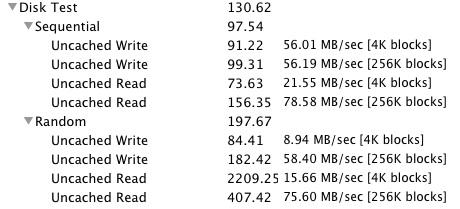
gewitterknecht
-
Posts
5 -
Joined
-
Last visited
Content Type
Profiles
Articles, News and Tips
Forums
Posts posted by gewitterknecht
-
-
This is not going to be a detailed guide, but I wanted to share my experiences how I got triple boot working on my D430.
Also, this might be not the most effective way to do it - but it worked

- I prepared an USB stick with the premade SL image from this great site.
- Successfully booted from the usb stick; partitioned the SSD with GUID partition table using the OS X disk utility application: 3 partitions, the first for Windows (FAT), the second for OS X (HFS Journaled, not case sensitive) and the third for Linux (also FAT for now)
- Installed OS X on the second partition /dev/sda2 - this also creates the EFI partition as /dev/sda1 so things change and now we have: /dev/sda1 EFI partition, sda2 Windows, sda3 OS X currently installing and sda4 Linux
- Booted again from the USB stick but chose the new installation on the internal SSD in Chameleon
- In OS X installed EDP 1.9.1, ran edptool, installed the kexts etc, installed the included Chameleon and updated to 10.6.8
- Now I had a working OS X installation with Chameleon bootloader - on to Linux
- Actually I'm an ArchLinux user, but for the sake of simplicity I used Ubuntu for now because I can easily have a working live USB stick and can install it in a short time without much configuration hassle (and everything works out of the box - nice).
- Prepared Ubuntu live USB stick (I used Unetbootin), booted from it, was offended by Unity, and started the installer.
- Chose manual partition and mountpoint config and chose /dev/sda4 for / (only one partition, which is debatable, but I personally don't really see the need to have /boot /home /var and so on dedicated partitions), also no dedicated swap partition, again I don't need it, 2 GB RAM is more than enough for me and Linux
- The Ubuntu installer wanted to install GRUB2 so I gave it /dev/sda4 for GRUB2, it probably complained about blocklists but that doesn't matter
- Rebooted and Chameleon saw the Linux partition, which brought me to grub and from there to my new Ubuntu installation (you can also boot OS X from there)
- Now comes the sorcery - installed GPT fdisk (gdisk) and used it to create a hybrid MBR
- Rebooted into the Windows 7 installation media (I again used an USB stick)
- Chose the custom install option, I had to reformat the partition I dedicated to Windows
- Installed Windows successfully to that partition but now the laptop booted directly into Windows
- Now I rebooted from the OS X USB stick again, chose the OS X partition on the SSD, booted into OS X and reinstalled Chameleon with edptool
- Then I had the Chameleon bootloader available again, but unfortunately Windows didn't boot anymore due to the device inaccessible error.
- I can't recall the exact steps, but after tinkering with which partition was active and the BCD it booted successfully again (IIRC booting from the Windows installation media, invoking cmd and bootrec.exe /fixboot and /rebuildbcd did the trick)
- For good measure I booted into Ubuntu and reinstalled GRUB2 to /dev/sda4 (using the --force because it would complain), to have the option to boot into Ubuntu, OS X and Windows from there. Probably you could also just remove it, I didn't try though.
And that's how I spent the last two days, I hope this was not too confusing

Cheers
-
Not bad - I forgot to mention that I have the 60 GB version which has considerably slower write speeds than the 120 GB and higher models.
I was choosing between the MX Nano, the Kevlar and the Runcore and chose the MX because it was the cheapest and it was available. I paid 110€.
Cheers
-
Hey,
Can you do a Xbench test and post your results here please ?
Sure

Disk Test 56.78 Sequential 84.21 Uncached Write 62.07 38.11 MB/sec [4K blocks] Uncached Write 84.23 47.66 MB/sec [256K blocks] Uncached Read 73.46 21.50 MB/sec [4K blocks] Uncached Read 169.41 85.14 MB/sec [256K blocks] Random 42.82 Uncached Write 29.57 3.13 MB/sec [4K blocks] Uncached Write 17.74 5.68 MB/sec [256K blocks] Uncached Read 1607.42 11.39 MB/sec [4K blocks] Uncached Read 384.81 71.40 MB/sec [256K blocks]
-
I use Mach Xtreme Technology MX Nano SSD in my D430. It works well. This thread might interest you - If you're still looking for a SSD ;)


Triple Boot experiences
in The Archive
Posted
No I didn't try that. It works perfectly right now. "Never touch a running system" as the saying goes